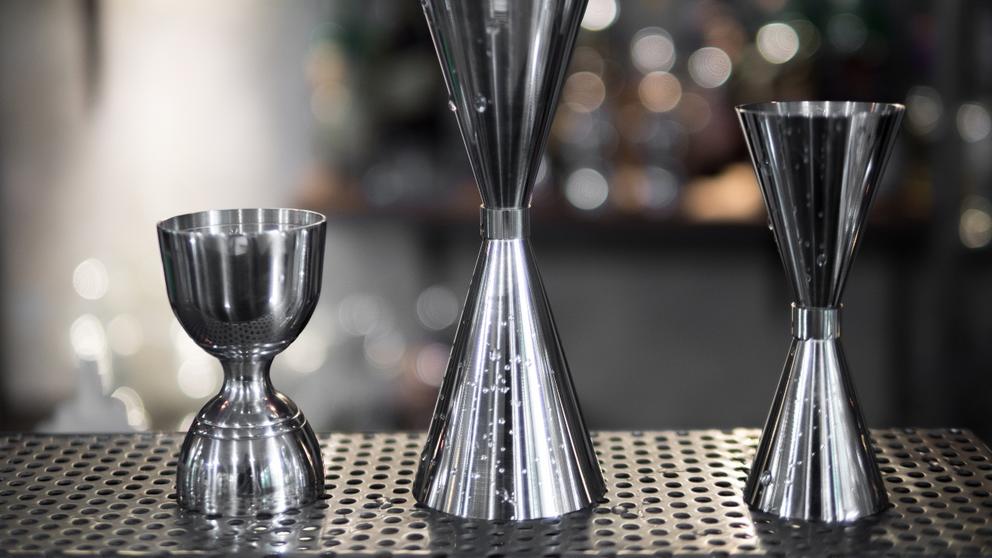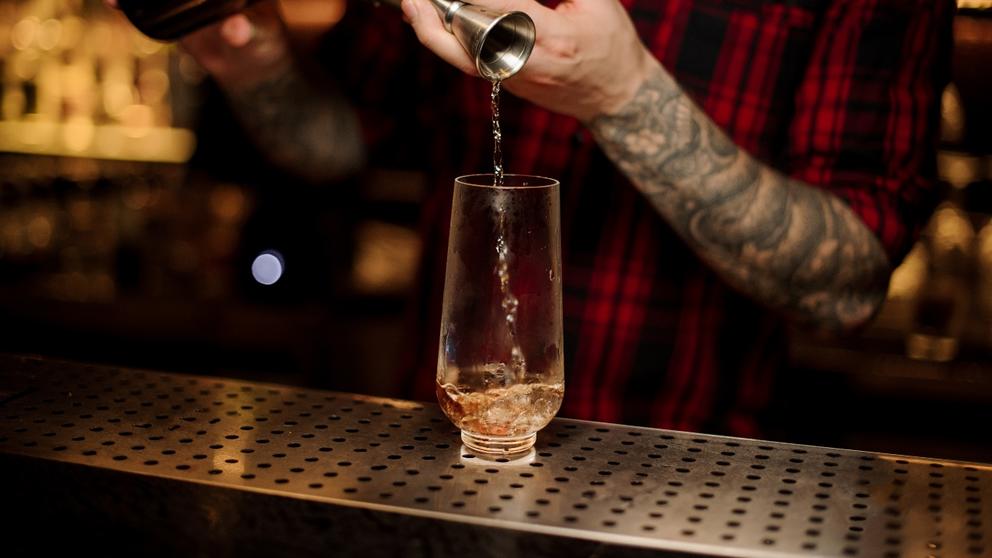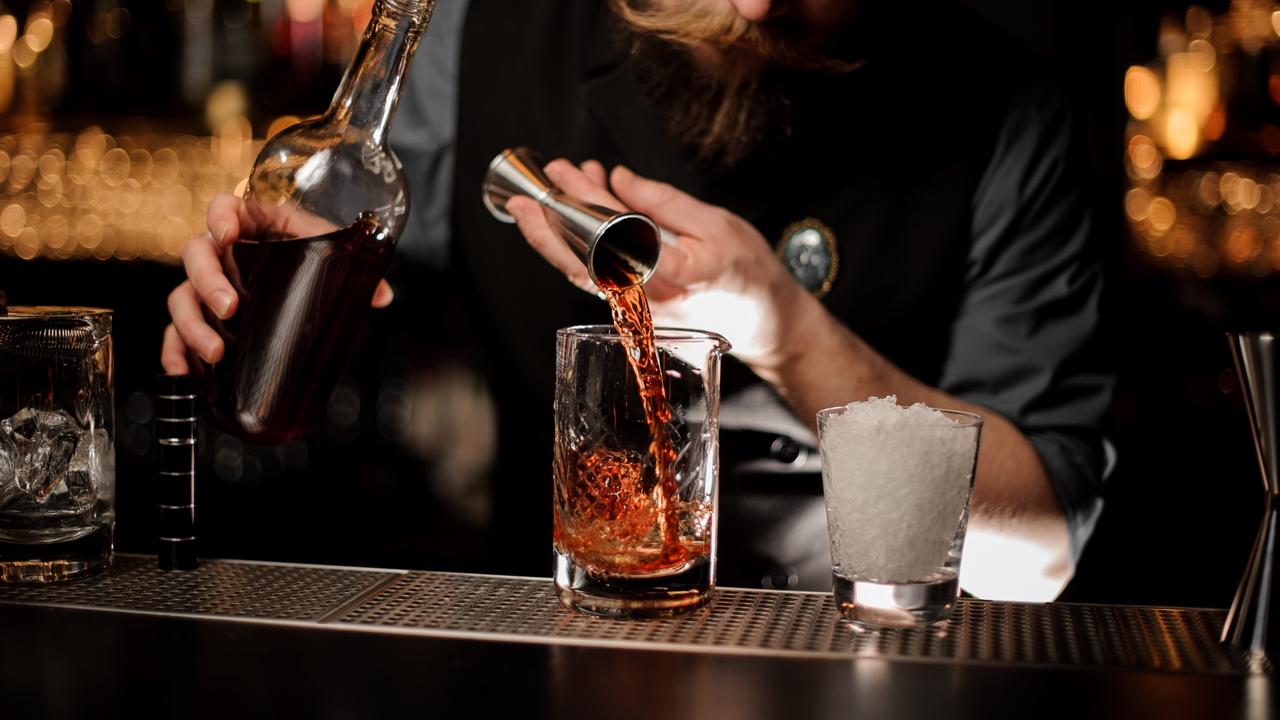The jigger has been a mainstay on the bar for well over a century and its importance in the creation of perfectly balanced cocktails is not to be understated. However, many bartenders choose not to use one, opting instead to free pour for speed of service. But this doesn’t mean that the jigger has been relegated to the dusty cabinet on the back bar. In fact, as we’re seeing a resurgence in cocktail culture and bartenders creating more and more complex and intricate cocktails, the jigger has never been more revered.
The History
The concept of the jigger -a device to repeatedly measure equal pours of liquor- has been around for centuries, and has especially been used in navies around the world, where handing out daily rations of liquor was common practice until a few decades ago. Jiggers also found a place behind the bar, helping bartenders and proprietors portion out their liquor correctly. They then became exceptionally useful and exponentially more popular when cocktails began to get more complex, moving past the likes of the old fashioned and the julep.
The main curiosity about this bar tools is how it got its name. There has been research done and there are now two prevailing theories, neither of which have been definitively proven. The first is that is was named after the lowest and smallest sail on a four mast ship by sailors in the British Navy; maybe they were showing disapproval at the size of the rations? Who knows. The second iteration of the name story of the jigger is that it was simply coined from the word “thing-a-majig” in American bars; a term which essentially means an object that is yet to have a name, or whose name has been forgotten; in this case it is expected that it was the former.
Styles and Variations

The jigger is one of the only bar tools whose functionality can translate to many different physical designs; if it holds the right amount of liquid and is pourable it can be designed however you wish. Despite this luxury for a bar tool, there are only three prevailing styles, and all are functionally double-ended with a different measurement on each end:
- Hourglass: By far the most common of the jigger styles, its conical shape is easily recognisable. Seemingly counterintuitive, it is also probably the most difficult to use, rarely featuring a rim, and much easier to overflow than the other two styles.
- Japanese: A taller, more slender version of the hourglass jigger, these look more professional and give you less chance of over pouring and overflowing. They sometimes come with marks inside the vessel itself, allowing for smaller measurements than just the two full measurements usually found in this tool.
- Bell: These are small and stubby like the hourglass version however their measuring elements are bell or goblet shaped. These often feature a small lip, again, allowing less chance for you to be overpouring and overflowing.
Besides variation in style, jiggers have a few other ways in which they can vary which will affect your decision when you’re choosing a jigger for your bar.
- Measuring Size: Typically jiggers come with one side measuring 1.5oz and the other measuring 1oz. However, they now come in a variety of sizes, with one side almost always being half the size of the other.
- Weight: Often tools and other items which we use feel much more comfortable when they’re a little weighty. The hourglass jigger is extremely light, whilst Japanese and especially bell styled jiggers have more weight to them.
Which should you purchase for your bar? It entirely down to personal preference. Hourglass jiggers are often significantly cheaper than their counterparts and this is part of the reason they’re the most common jigger found behind your average bar. If you’re stocking a bog standard working bar these may be all you need and want. However, if you’re building a home bar setup you may want something with a little more class so you can show off in front of your guests.
When is it Used?

It differs by the laws of the land and sometimes by the licence which establishments have. In some places, the use of a jigger is required by law however in others, bar staff may be allowed to free pour so the jigger will only pulled out for use with expensive, top shelf spirits and, maybe, when crafting some higher-end cocktails.
The jigger is, however, also omnipresent in high-end cocktail bars where cocktails are a crafted artform and precision is of the utmost importance. This is not putting down those that free pour, however in order to craft the perfect cocktails, precise measurement is necessary.
Using a Jigger
Luckily, all styles of jigger are used in the same way, but using them with grace is down to practice. Here are the steps of using a jigger.
- Slide the jigger between two of your fingers -some prefer the index and the middle, others prefer the middle and the ring- with your palm facing downward.
- Hold the jigger level alongside the rim of the glass the liquid is intended for.
- Using your other hand fill the jigger with your chosen liquid. (This is the hardest part, not overpouring and overflowing the jigger).
- Once the jigger is full, flex the finger closest to the glass downward, whilst tilting the jigger upward and over with the finger on the other side of it; thereby depositing your perfectly measured pour into the glass. Here you can appreciate the shape of the hourglass and bell jiggers for speed of use, as the Japanese style requires a larger hand movement to fully empty the jigger.
Once you’ve finished with a single cocktail -it’s alright to use a jigger for multiple ingredients if they’re all going to be mixed together, just pour the thinnest liquid first- make sure you rinse out your jiggers to remove any residual liquor or other liquid before using it for a different beverage.

